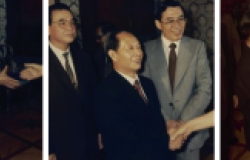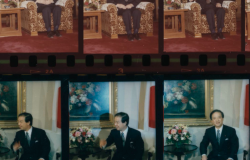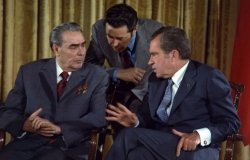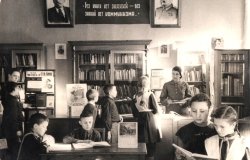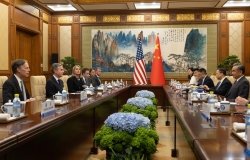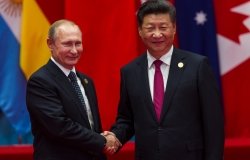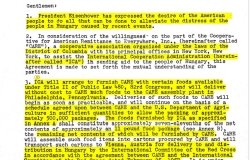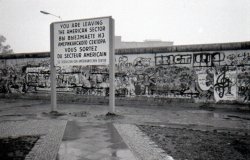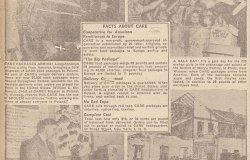Stasi Aid and the Modernization of the Vietnamese Secret Police
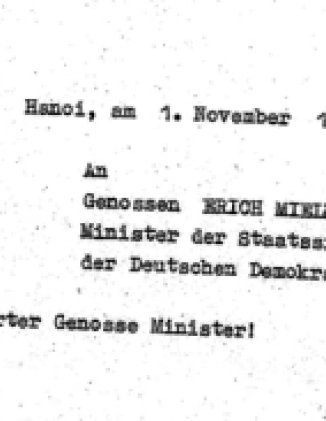

CWIHP e-Dossier No. 51
The East German “Stasi” and the Modernization of the Vietnamese Security Apparatus, 1965–1989
Martin Grossheim
After the outbreak of the Second Vietnam War, Soviet Premier Alexei Kosygin visited Hanoi and promised state-of-the-art weaponry to the North Vietnamese Army for use against the American B-52 bombers that had begun to strike territory north of the 17th parallel. This marked the beginning of extensive Soviet military assistance to the Democratic Republic of Vietnam (North Vietnam), aid which was comparable to military support provided by the People’s Republic of China.
The significance of Soviet and Chinese military aid to Hanoi during the war against the Republic of Vietnam and the United States has been analyzed many times and reevaluated using new evidence that has surfaced since the end of the Cold War.[1] However, this e-Dossier tells a different, generally unknown story: the assistance of the German Democratic Republic (East Germany), a second-tier member of the socialist bloc, in establishing and modernizing North Vietnam’s security apparatus from the beginning of the Vietnam War in 1965 to the end of the Cold War in 1989.
Vietnamese communists had learned basic intelligence skills in Moscow and South China before the August Revolution in 1945. In addition, there was continuity between the colonial and the national intelligence services. High-level cadres of the Public Security Forces, such as Lê Giản and Nguyễn Văn Ngọc, were certainly impressed by the effectiveness of the French Sûreté.[2] Others, like the first Minister of Public Security Trần Quốc Hoàn, survived many years in French prisons, where they gained first-hand experience with the colonial intelligence apparatus, learning from the methods of their French oppressors. Ironically, the first directors of the DRV public security and intelligence services had received basic training in intelligence by the British MI6 and the American OSS.[3]
When the DRV joined the international communist world in 1950, its intelligence and security services were increasingly modernized and professionalized, partially due to the help of Chinese advisors.[4] In February 1953, the Ministry of Public Security (Bộ Công An) was formally established and its professionalization and modernization continued after 1954, as its relationships with security services in other socialist countries became much more extensive.
The first contacts between the North Vietnamese Ministry of Public Security and the GDR Ministry of State Security date to 1957.[5] In 1959, the first delegation from Hanoi arrived in East Berlin and, according to Stasi files, in 1960 Minister of Public Security Trần Quốc Hoàn paid an official visit to the GDR.[6]
The modernization of the North Vietnamese security apparatus gained momentum at the beginning of the 1960s, when the DRV took steps to establish a police state and ordered the Bộ Công An to establish scientific and technical departments considered necessary for professional operational work. While some of the institutional changes were immediately implemented, it was only after the beginning of the Vietnam War in 1965 that North Vietnam’s security apparatus gained the necessary expertise by establishing or renewing contacts with security services in the socialist camp.
In this context, the assistance provided by the GDR Ministry of State Security played a major role. Trần Quốc Hoan, North Vietnamese Minister of Public Security, had heard much about the “industrial, modern, and scientific working-style” of the East German Ministry of State Security, which by that time had already gained a good reputation across the socialist bloc as an efficient intelligence service.[7] At the beginning of November 1965, Trần Quốc Hoàn sent a letter Erich Mielke, his East German counterpart, and thanked him for receiving a small delegation headed from his ministry.[8]
On December 13, 1965, Nguyễn Minh Tiến, head of the North Vietnamese Technical Operations Sector, met the GDR Minister of State Security for a long talk (Document No. 3). Nguyễn Minh Tiến was to become a central figure in the cooperation between the two security services. He later became Deputy Minister of Public Security in Hanoi and was the main Vietnamese counterpart for cooperation with the Stasi, visiting East Germany many times. This exchange testifies to the continuity in personnel in the relations between the GDR Ministry of State Security and the Vietnamese Ministry of Public Security.
It was no coincidence that Trần Quốc Hoàn had sent the head of the new Technical Operations Department. Upon his arrival, Nguyễn Minh Tiến met his colleagues from the East German OTS (Technical Operations Sector) and asked for advice on how to establish a similar department. His detailed requests focused on the transfer of experiences in the different fields of the Stasi’s OTS, including the use of surveillance equipment and the fabrication of documents. Minister Mielke repeatedly complained about the long break in the relations, but promised help.
Nguyễn Minh Tiến’s long working trip in the GDR lasted until at least February 1966. In a final meeting before Nguyễn’s depature, the GDR Minister of State Security broadened his support and invited Vietnamese security cadres to attend training courses in East Germany (Document No. 4). Nguyễn Minh Tiến left a long wish-list for further assistance, including state-of-the-art devices that the East German Stasi was prepared to purchase in West Germany and other capitalist countries if necessary.
The modernization of the North Vietnamese security apparatus received a further boost in September 1966, when Trần Quốc Hoàn paid an official visit to the GDR and met his East German counterpart, the infamous Erich Mielke (Document No. 5). Trần Quốc Hoàn asked the GDR Ministry of State Security to assist Vietnam in establishing a centralized list of suspicious persons. This shows that the North Vietnamese Ministry of Public Security was not only interested in upgrading the technology used for surveillance, but also in bolstering its organizational efficiency in targeting both internal and external enemies.[9]
Beginning in 1967, security cadres from the DRV were sent to East Germany on a regular basis to attend training courses. Starting in the same year, North Vietnam received “solidarity shipments” from the GDR, usually including surveillance devices such as headphones, tape recorders, bugging equipment, and telecommunications equipment (Document No. 7).
To be better prepared to assist their colleagues in Hanoi in upgrading their intelligence infrastructure, delegations from the GDR Ministry of State Security and the Ministry of Interior also paid visits to North Vietnam. During these visits the East German security cadres received top-secret information from their counterparts in Hanoi and gained unique insights into the security situation in the DRV.
Such insights included a copy of the DRV Ministry of Public Security’s work plan for 1971-1975, which stressed the need to reestablish order and stability and acknowledged security problems in North Vietnam (Document No. 8).[10] According to the plan, the DRV wanted to develop a list of all “negative elements” in the country, to increase the number of unofficial informants, and to stabilize the “old forces.” In other words, this document verifies the existence of a network of unofficial informants recruited and used by the DRV Ministry of Public Security. The plan further stipulated that all persons who owned devices deemed sensitive by the Ministry, including weapons, printing equipment, and typewriters, were also to be registered and closely monitored by unofficial informants. The Ministry of Public Security also warned against “phenomena of decadence” originating in South Vietnam and called for the registration and “isolation” of people from the South in camps. This was, in effect, the exclusion of certain groups from the “socialist body,” as it was to be practiced after the end of the war in South Vietnam.[11] In sum, this document reveals the efforts of the North Vietnamese security apparatus to further enhance its tools for social engineering and social control.
A document from December 1971 contains detailed information about the plans of the GDR Ministry of State Security to assist the North Vietnamese Ministry of Public Security in 1972 (Document No. 9). According to this document, the East German Stasi could deliver most of the items requested by their comrades from Hanoi. Some of them would even be purchased in capitalist countries; in other cases, the DRV was advised to forward their requests to other socialist countries, Hungary and Czechoslovakia in particular. This is evidence that there was a division of labor within the socialist camp when it came supporting the North Vietnamese security apparatus, an interesting phenomenon that should be further analyzed by exploring documents from other former socialist countries.
The Stasi document from 1971 is also interesting because it provides information on two concrete examples of “fraternal aid” to the North Vietnamese Ministry of Public Security. First, the document mentions a plan to build a paper factory for the production and fabrication of documents in the DRV with East German assistance. This project was scheduled for 1973 or 1974, but in the end it took several more years and was only finished in 1980.[12] Second, and closely connected with the first project, the document contains detailed evidence of how the GDR Ministry of State Security helped the North Vietnamese security services to duplicate South Vietnamese identity cards (called “Green Dragon cards”), which allowed high-level communist cadres who operated in the south to avoid being caught and imprisoned by South Vietnamese police.[13]
After the collapse of the Republic of Vietnam and the victory of the DRV and the National Liberation Front in April 1975, East Germany not only continued to help their comrades in Vietnam to build up their security apparatus, but even intensified their assistance. As Erich Honecker promised, “solidarity with Vietnam—now more than ever.”
Thus in November 1977, a delegation from the Vietnamese Ministry of Interior (Bộ Nội Vụ) arrived in East Berlin to ask their Stasi colleagues for advice on how to protect the national economy, how to build up a socialist economy, how to fight against hostile influences on the Vietnamese mass media, and how to avoid “political-ideological diversion among artists, students, doctors and forms of punishment” (Document No. 10).[14] Specifically, the North Vietnamese delegation asked the GDR Ministry of State Security to share its experiences in recruiting unofficial informants among intellectuals and artists. It is unclear to what degree the Vietnamese security services heeded the advice of their East German hosts, but the document nevertheless reflects the ongoing interest of the Vietnamese security apparatus in oppressing and monitoring suspicious and counterrevolutionary elements.
After 1975, Sino-Vietnamese relations, which were already strained during the final years of the war, became worse and worse. At the same time, Vietnam took steps to become more closely integrated into the socialist bloc under the leadership of the Soviet Union. In June 1978, the Socialist Republic of Vietnam joined the Socialist Council for Mutual Economic Assistance (COMECON). Against the backdrop of the deterioration of relations with China, Hanoi signed a twenty-five year defense treaty with Moscow in November 1978. After the Chinese invasion of Vietnam in February-March 1979, relations with Beijing were at an all-time low and continued to be tense until the beginning of the 1990s.
After intensifying the economic and, at least with regard to the Soviet Union, military cooperation with the socialist bloc, Vietnam decided in 1980 to elevate cooperation in intelligence and security matters. It is striking that in October 1980 Hanoi not only signed a treaty of cooperation with the East German Ministry of State Security (Document No. 11), but in the same year also concluded agreements with the Soviet KGB and the Cuban, Czechoslovakian, and Hungarian interior ministries.[15] The agreement on cooperation between the Vietnamese and East German security services provided for the exchange of information on the “enemy,” the exchange of liaison officers, and the continuation of “fraternal aid” from the GDR in the field of operational devices and telecommunication technology.
A report filed by Günter Schmidt, Head of the Technical Operations Sector in the GDR Ministry of State Security, on his visit to Vietnam in November-December 1985 contains detailed information on the state of cooperation with the main Department 18, the corresponding department in the Vietnamese Ministry Interior (Document No. 12). Schmidt positively assessed the results of the assistance that the East German OTS had given in the field of documents, cryptographic analysis, the supply of equipment, and the training of Vietnamese specialists, as well as the supply of technical operations equipment and containers. Although mutual relations were still considered to be asymmetrical, with the GDR Stasi mainly providing technical devices and training, Schmidt also mentioned in his report that the Vietnamese comrades were now able to produce small devices such as Mikrat cameras for operational work themselves.
Schmidt’s report is also evidence of the continuity among the staff of the Vietnamese technical operations department. The deputy head of the department, Nghiêm Sỹ Tạo, had been one of the first North Vietnamese security cadres to receive extensive training by the East German OTS in the 1960s. Therefore, it is no coincidence that in one of the few “surviving” reports of the Stasi Liaison Officer in Hanoi, he writes about a meeting with the deputy directors of the main Department 18 of the Vietnamese Ministry of Interior in January 1989—among them the above-mentioned Nghiêm Sỹ Tạo (Document No. 13). His counterparts mentioned that both sides could celebrate twenty-five years of cooperation. There is no evidence whether this anniversary was ultimately celebrated. However , 1989 was also the last year of East German assistance to Vietnam in the name of international proletarian solidarity—the Berlin Wall fell that same November and Germany was reunified the following year.
Martin Grossheim, a Fellow at the Wilson Center in 2013-2014, is Adjunct Professor at the Department of Southeast Studies at Passau University/Germany.
List of Documents
Obtained by Martin Grossheim and translated by Martin Grossheim and Sean O'Grady.
Document 1
1 November 1965, Letter from DRV Minister of Public Security Trần Quốc Hoàn to GDR Minister of State Security Erich Mielke
[Source: BStU MfS Abt. X 652, 24-26.]
Document 2
6 December 1965, Letter from the Committee for State Security of the Council of Ministers of the USSR on Aid to the Ministry for State Security of the DRV
[Source: BStU MfS Abt. X 652, 29-30.]
Document 3
14 December 1965, Memorandum Regarding a meeting of the Comrade Minister with the Vietnamese Comrades Nguyen Minh Tien, Director of the OTS of the MfS of the Democratic Republic of Vietnam, on 13 December 1965 from 16:00 until 19:00
[Source: BStU MfS Abt. X 652, 31-49.]
Document 4
10 February 1966, Note on a Meeting of Comrade Minister with the Vietnamese comrade on 1 February 1966 from 15:00 until 17:00
[Source: BStU MfS Abt. X 652, 50-63.]
Document 5
5 October 1966, Note on a meeting between senior staff of the Ministry of State Security of the DRV and the MfS of the German Democratic Republic on 29 September 1966 from 15.30 until 17.00
[Source: BStU MfS Abt. X 652, 144-152.]
Document 6
7 January 1967, Letter from DRV Minister of Public Security Trần Quốc Hoàn to GDR Minister of State Security Erich Mielke
[Source: BStU, MfS Abt X 652, 161.]
Document 7
19 July 1968, Technical Operations Sector, Deliveries to the Ministry of State Security of the DRV
[Source: BstU MfS Abt. X 645, 390-391.]
Document 8
Excerpts from the perspective plan of the Ministry of State Security for the years 1971-1975 (field of policing)
[Source: BStU MfS Abt. X 562, 696-702.]
Document 9
6 December 1971, Support for the Security Services of the Democratic Republic of Vietnam
[Source: BStU MfS Abt. X 348, 261-264.]
Document 10
8 November 1977, Consultation between a delegation of the Ministry of Interior of the Socialist Republic of Vietnam and representatives of the departments XVIII [protection of the national economy] and XX [state institutions, culture, church, underground] in the Ministry for State Security, 18 October 1977 to 7 November 1977
[Source: BstU MfS Abt. X, 340: 158-166.]
Document 11
28 October 1980, Agreement on the Cooperation between the Ministry for State Security of the German Democratic Republic and the Ministry of Interior of the Socialist Republic of Vietnam
[Source: BStU MfS – BdL 008724: 1-9.]
Document 12
6 January 1986, Letter from Director of Technical Operations Sector Schmidt to Minister of State Security Erich Mielke, Cooperation with the MdI of the SRV
[Source: BStU MfS Abt. X, 348: 257-259.]
Document 13
28 January 1989, Letter from Liaison Office of the MfS at the MdI of the SRV to Ministry of State Security
[Source: BStU MfS Abt. X 348: 77-79.]
[1] See, for example, Ilya V. Gaiduk, Confronting Vietnam: Soviet Policy toward the Indochina Conflict, 1954-1963 (Washington, DC: Woodrow Wilson Center Press; Stanford, CA: Stanford University Press, 2003); Ilya V. Gaiduk, The Soviet Union and the Vietnam War (Chicago: Ivan R. Dee, 1996); Qiang Zhai, China and the Vietnam Wars 1950-1975 (Chapel Hill: University of North Carolina Press, 2000).
[2] Christopher E. Goscha, “Intelligence in a Time of Decolonization: The Case of the Democratic Republic of Vietnam at War (1945-1950),” Intelligence and NationalSecurity 22, no. 1 (February. 2007): 105.
[3] For details, Goscha, “Intelligence in a Time of Decolonization,” 106-107.
[4] See Goscha, “Intelligence in a Time of Decolonization,” 116-118.
[5] BStU MfS AP 1839/61, 737-738.
[6] BStU MfS AP 1839/61, 724, 737.
[7] Nguyễn Thanh et al., eds. Những Kỷ Niệm Sâu Sắc Về Bộ Trưởng Trần Quốc Hoàn (Profound Memories of Minister Tran Quoc Hoan] (Hà Nội: NXB Công An Nhân Dân, 2004), 210; Trịnh Thúc Huỳnh, ed., Đồng chí Trần Quốc Hoàn – chiến sĩ cách mạng trung kiên của Đảng, nhà lãnh đạo xuất sắc của Công an Việt Nam (Comrade Trần Quốc Hoàn: Faithful Revolutionary Soldier of the Party, Outstanding Leader of the Public Security of Vietnam) (Hà Nội: Chính trị Quốc gia, 2006), 189.
[8] BStU MfS Abt. X, 652. Tran Quoc Hoan, Hanoi, to Erich Mielke, Nov. 1, 1965: 24-26.
[9] Nguyễn Thanh et al., eds. Những Kỷ Niệm Sâu Sắc Về Bộ Trưởng Trần Quốc Hoàn, 69.
[10] For more details see BStU MfS Abt. X, 562, Report on the Activities of the Delegation of the Ministry of Interior of the German Democratic Republic in the Ministry of State Security of the Democratic Republic of Vietnam, 21 Dec. 1970, Kminikowski: 677-693.
[11] It is ironic that the next paragraph the document provides for the struggle against contagious diseases and the implementation of the necessary quarantine measures to uphold hygiene.
[12] See BStu MfS Abt. X 348, Council of Ministers Socialist Republic of Vietnam to Deputy Chairman of the German Democratic Republic Council of Ministers, Tran Quynh, 7 March 1984: 288.
[13] For details see also “Nhớ mãi những kỷ niệm về Bộ trưởng Trần Quốc Hoàn” (“Unforgettable Memories of Minister Tran Quoc Hoan”], Công An Nhân Dân (People’s Public Security Newspaper), 21 January 2014 <http://www.cand.com.vn/vi-VN/phongsu/2014/1/221014.cand> (accessed 21 January 2014).
[14] In June 1975, the Ministry of Public Security and the Ministry of Interior were merged into one ministry called Ministry of Interior (Bộ Nội Vụ). In 1998, this ministry was renamed Ministry of Public Security (Bộ Công An).
[15] Bộ Công An. Tổng Cục Xây Dựng Lực Lương Công An Nhân Dân Việt Nam (Ministry of Public Security. General Department of Building up the Forces of the People’s Public Security of Vietnam), Lịch sử Công An Nhân Dân Việt Nam (1975–1996) (Sơ thảo) (History of the People’s Public Security of Vietnam, 1975–1996 (Draft)) (Hanoi: Công An Nhân Dân, 2011), 156-157; Phạm Văn Quyền et al., eds., Bộ Công An. 60 năm Công An Nhân Dân Việt Nam (1945-2005) (Sixty Years People’s Public Security Forces (1945-2005) (Hanoi: NXB Công An Nhân Dân, 2000), 522-523.
About the Author

Martin Grossheim
Associate Professor in Vietnamese History, Seoul National University

Cold War International History Project
The Cold War International History Project supports the full and prompt release of historical materials by governments on all sides of the Cold War. Through an award winning Digital Archive, the Project allows scholars, journalists, students, and the interested public to reassess the Cold War and its many contemporary legacies. It is part of the Wilson Center's History and Public Policy Program. Read more
